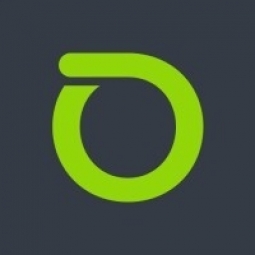Customer Company Size
Large Corporate
Region
- America
Country
- United States
Product
- nGeniusONE® Service Assurance platform
- InfiniStreamNG™ software
- vSTREAM™ virtual appliances
- nGenius®PULSE with 3000 series nPoint sensors
- Software-based nGenius 5000 series Packet Flow Switches
Tech Stack
- Amazon AWS GovCloud
- Amazon Virtual Private Cloud (VPC)
Implementation Scale
- Enterprise-wide Deployment
Impact Metrics
- Cost Savings
- Productivity Improvements
- Customer Satisfaction
- Digital Expertise
Technology Category
- Infrastructure as a Service (IaaS) - Cloud Computing
- Infrastructure as a Service (IaaS) - Hybrid Cloud
- Infrastructure as a Service (IaaS) - Public Cloud
- Infrastructure as a Service (IaaS) - Virtual Private Cloud
Applicable Industries
- National Security & Defense
Applicable Functions
- Discrete Manufacturing
- Logistics & Transportation
Use Cases
- Cybersecurity
- Predictive Maintenance
- Remote Asset Management
Services
- Cloud Planning, Design & Implementation Services
- Cybersecurity Services
- System Integration
About The Customer
The IT and Security operations teams for this branch of the United States Military has a difficult mission – to ensure the security, performance, and availability of their application services around the world. For this branch of the military, hundreds of thousands of active-duty personnel and ready reservists, along with many thousands more civilian employees deployed in global locations that are often difficult to reach, all depend on this IT and SecOps team for seamless, secure communications. The criticality of swift, unencumbered communications to and from these service people and locations cannot be overstated, particularly considering that the safety and protection of US citizens may be in the balance. Personnel of the military branch depend on their networked applications for all sorts of purposes from simple email, voice services, and video conferencing (unified communications & collaboration – UC&C), to enterprise resource planning (ERP) for ordering and delivering all their equipment, uniforms, food, and other supplies, just to highlight a few important services.
The Challenge
The branch of the United States Military was engaged in a major, multi-year data center and digital transformation initiative that touched many aspects of their infrastructure design. With multiple major data centers, 100 remote facilities, migration of key services to Amazon AWS GovCloud, as well as thousands of remote users, providing consistent high-quality availability to critical application services was no small task. Broad, comprehensive, end-to-end application visibility was needed to identify and troubleshoot disruptions, track performance before, during, and after migrations to new data center technologies and /or to the cloud, map service dependencies, and trend end-user experience from all their global locations to the data centers and cloud services to ensure uniformity in security and quality service delivery.
The Solution
The military branch selected the following components for a comprehensive solution to focus on key capabilities and functions: nGeniusONE Service Assurance platform and NETSCOUT Certified InfiniStreamNG 9000 series Software Appliances monitoring the north-south traffic flows throughout the highspeed data center, vSTREAM virtual appliances deployed in the AWS GovCloud, Software-based nGenius 5000 Packet Flow Switches forwarding and distributing networked packet-based traffic to downstream tools, and nGeniusPULSE with 2000 and 3000 nPoint sensors deployed to their nearly 100 remote locations to measure, evaluate, troubleshoot, and understand issues impacting end-user experience. On-site engineers (OSEs), that are part of NETSCOUT’s premium services program, have been contracted to assist in deployment, operation, and ongoing analysis of NETSCOUT solutions.
Operational Impact

Case Study missing?
Start adding your own!
Register with your work email and create a new case study profile for your business.
Related Case Studies.

Case Study
Data Capture for Afghanistan Forces
Electronic equipments on the field of Afghanistan provided information on the status of the vehicle and to identify potential threats surrounding it to the British Force. The monitoring and interpretation of this data requires robust and sophisticated digitization for data capture and communication.
Case Study
Enhancing Security and Compliance in Remitly's Global Money Transfer Service with Fastly
Remitly, an online remittance service, was faced with the challenge of securing its proprietary global transfer network. The company needed a security solution that could meet PCI requirements and protect customers' sensitive transactions through its mobile application. The solution had to be capable of defending against new and emerging attack types without impacting performance. Remitly also had to deal with irregular traffic patterns, such as a sudden spike in account transfers from a small network segment on the Pacific coastline of South America. The company needed to determine in real time whether such traffic indicated an attack or valid requests. A traditional web application firewall (WAF) would not be able to distinguish this traffic, potentially leading to customer frustration if the IP was blacklisted.

Case Study
Major Aerospace Company Automates Asset Management
The O&M division of an aerospace and global security company was using spreadsheets to manually track more than 3,000 assets assigned to students and staff. Maintaining audit trails for this high volume of equipment became increasingly time-consuming and challenging. The chore involved knowing precisely what equipment was on hand, what had been issued, its location and the name of the custodial owner of each item. Every aspect of this task was carried owner of each item. Every aspect of this task was carried out by individuals with spreadsheets. Manually documenting the full lifecycle of each asset added to the burden. This included tracking maintenance requirements and records, incidents and damages, repairs, calibrations, depreciation, and end-of-life data.

Case Study
Securing a Large Data Center in the EMEA Region: An IoT Case Study
A leading data-center operator in the EMEA region, with multiple facilities spanning over 25,000 square meters, faced significant security challenges. The operator experienced interruptions in their internal IT network due to unsupervised work of third-party technicians. Despite having a high-end building control system that provided 24x7 monitoring and control to all the building’s infrastructure, the data center was vulnerable from a cyber perspective as it was connected to the IT network infrastructure. The operator launched an urgent OT cyber security project that included both IT-OT network segmentation and OT network asset mapping and anomaly detection. The main objectives were to harden the security of the server systems, secure the facility’s power supply and server cooling system, strengthen the segmentation between building and operational systems, create a visual OT network map, and set up a system for presenting supply-chain attacks that may threaten the data center through equipment vendors’ maintenance activities.

Case Study
Leveraging Graph Technology for Enhanced Cybersecurity: A Case Study on MITRE's CyGraph
MITRE, a federally-funded, not-for-profit company that manages seven national research and development laboratories in the United States, was grappling with the challenge of managing an influx of cybersecurity data. The constant changes in network environments were impacting the security posture of U.S. government agencies. Intrusion alerts, anti-virus warnings, and seemingly benign events like logins, service connections, and file share access were all potentially associated with adversary activity. The cybersecurity researchers at MITRE needed to go beyond rudimentary assessments of security posture and attack response. This required merging isolated data into higher-level knowledge of network-wide attack vulnerabilities and mission readiness. The challenge was not the lack of information, but the ability to assemble disparate pieces of information into an overall analytic picture for situational awareness, optimal courses of action, and maintaining mission readiness. The team also struggled with fully comprehending a given security environment and mapping all known vulnerabilities.

Case Study
Enhancing Security Precision with IoT: A Case Study of Guardsman Group
Guardsman Group, a leading security company in the Caribbean, faced a significant challenge in maintaining the security of its digital infrastructure. The company provides security equipment, personnel, and systems for various businesses across the region. However, one of its offices experienced a security incident that affected all communications at that location. The existing security tools were not sufficient to provide the necessary protection, and it took hours to identify the source of the issue. This incident highlighted the need for a dynamic solution that could proactively identify threats. The company's primary concern was any disruption to its business, as it manages a significant portion of Jamaica's money and cannot afford for its operations to go down.







